Two historically interesting Mount Everest ciphers
In both 1924 and 1953, British Mount Everest expeditions used encryption to confidentially inform home about a possible first ascent of the world’s highest mountain.
In 1924, the British launched an expedition with the aim of climbing Mount Everest for the first time. The best-known participant in this undertaking was the mountaineer George Mallory, who at that time was one of the best in the world in his field.
The successful expedition of 1924
As is generally known, the Mount Everest expedition of 1924 did not reach its goal. After two previous attempts to climb the mountain had to be abandoned, George Mallory and his companion Andrew Irvine tried again to reach the summit on June 8. The two did not return. The remaining participants ended their stay on the world’s highest mountain and returned home without having achieved anything.
Theoretically, it could be that Mallory (he was clearly the better climber of the two) and Irvine only met with an accident on their way back from the summit of Mount Everest. In other words, Mallory and Irvine could be the first climbers of the highest mountain in the world. However, there are considerable doubts about this hypothesis. Everest veterans such as Reinhold Messner or Hans Kammerlander (and not only them) consider it simply impossible that the two Britons actually climbed to 8848 meters with the equipment of the time in non-optimal weather conditions on the route they chose.
I have always enjoyed reading the various reports about the British Mount Everest expedition of 1924. This was certainly due to the fact that the name “Mallory” caught my eye. “Mallory” is the name in cryptography of the fictional villain who eavesdrops on everything and tries to break encryption. He appears several times in my book “Cryptography – Methods, Protocols, Infrastructures”, for example. However, his name is derived from “mal” (“bad”) and has nothing to do with the mountain climber of the same name.
Besides the coincidental name similarity, there is another reason why George Mallory is present in cryptography. When asked why he wanted to climb Everest, he once replied, “Because it is there”. Crypto historians give a similar answer to the perennial question of why people are trying to solve the Voynich Manuscript and other ancient cryptograms.
Blog reader Alexander pointed out to me years ago that there is still a much more direct connection between George Mallory and cryptography. For shortly after the failure of the climb, a member of the expedition sent an encrypted letter from base camp to Britain. This was first taken by a messenger to the town of Pagri. From there it went to London by telegram on June 19, 1924. The following scan shows it:
Translated with www.DeepL.com/Translator (free version)
The text reads: MALLORY IRVINE NOVE REMAINDER ALCEDO.
The telegram contains two code words: NOVE and ALCEDO. It was quite common at that time to encrypt telegrams by replacing important words with code words. There were codebooks with tens of thousands of entries for this purpose.
The code book used is the “Universal Telegraphic Phrase-Book” (thanks to Robert for the hint). The recipient has also written the meaning of the two code words in pencil. NOVE means “killed in last engagement”, while ALCEDO stands for “arrived all in good order”. This confirms : codebooks were not only used to encrypt, but also to shorten telegrams (the shorter a telegram, the cheaper). In many cases, shortening was even the actual reason to use a codebook.
Decoded the telegram reads: MALLORY IRVINE KILLED IN LAST ENGAGEMENT, REMAINDER ARRIVED ALL IN GOOD ORDER. In German, roughly, “Mallory and Irvine were killed in the last endeavor, all others arrived safely.”
OBFERRAS is not a code word but the telegram address of the recipient.
The successful expedition of 1953
In 1953, the British tried again with a Mount Everest expedition, and this time they succeeded. On May 29, 1953, New Zealander Edmund Hillary and Sherpa Tenzing Norgay reached the summit.
Having been familiar with the 1924 Mount Everest telegram for years, I recently also learned, thanks to an article in the News UK Archives, how the coded communication at the same spot went down nearly three decades later.
Apparently, The Times had the exclusive right to be the first to report on the eventual first ascent of Mount Everest (or failure to do so). For this purpose, it was necessary to have news from the base camp brought to Katmandu by Sherpa messenger and to send it from there by telegram to the editorial office in London. To ensure that no one could snatch away the Times’ exclusive news, the following encryption code, specially created for this purpose, was planned:
As you can see, this code replaces plaintext words like “Hillary” or “Avalanche” with code words that have a meaning (e.g., “Birmingham” or “Newcastle”) but whose meaning in this context is completely different. This was a common practice that was also used, for example, in the (unsolved) silk dress cryptogram.
However, according to the linked article, this code was thought to be compromised (I don’t know the reasons for this) and therefore came up with the following provisional code as a replacement:
In this code, the code words have a deliberately misleading character. They all seem to say something negative (e.g. “Only few provisions left”), but have a meaning independent of this (e.g. “reached about the same altitude as the last attempt”). Apparently, the intention was to deliberately deceive possible fellow readers.
After Hillary and Tensing had returned to camp after their successful ascent, the following message from Mout Everest went to London:
Snow conditions bad stop advanced base abandoned May 29 stop awaiting improvement all well
With the above code, it should not be difficult to decode this message. Who has found out the plain text, can publish it with pleasure as a comment.
On June 2, 1953, the Times headlined: “Everest Conquered – Hillary and Tensing Reach the Summit”.
f you want to add a comment, you need to add it to the German version here.
Follow @KlausSchmeh
Further reading: Das zweite Kryptogramm von Diana Dors
Linkedin: https://www.linkedin.com/groups/13501820
Facebook: https://www.facebook.com/groups/763282653806483/

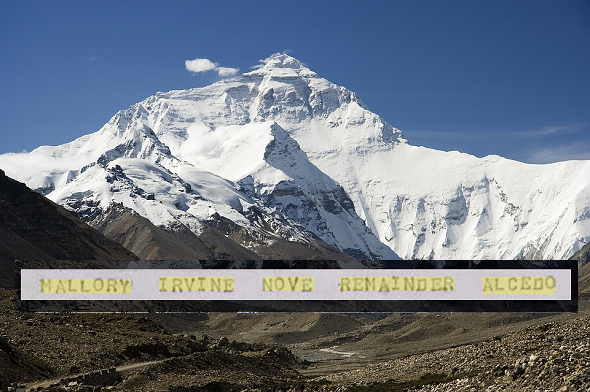


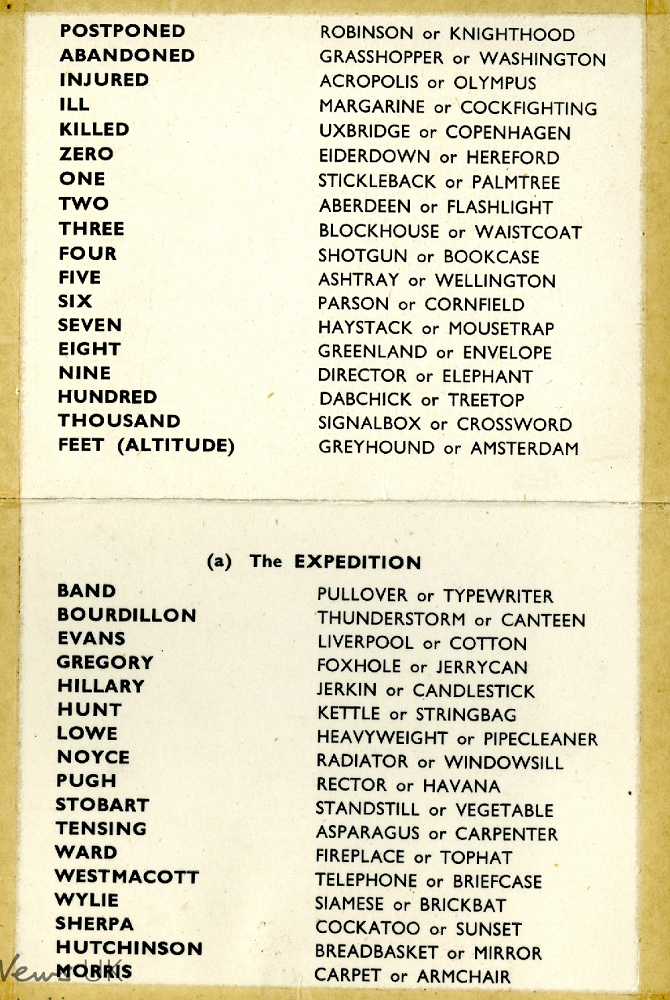
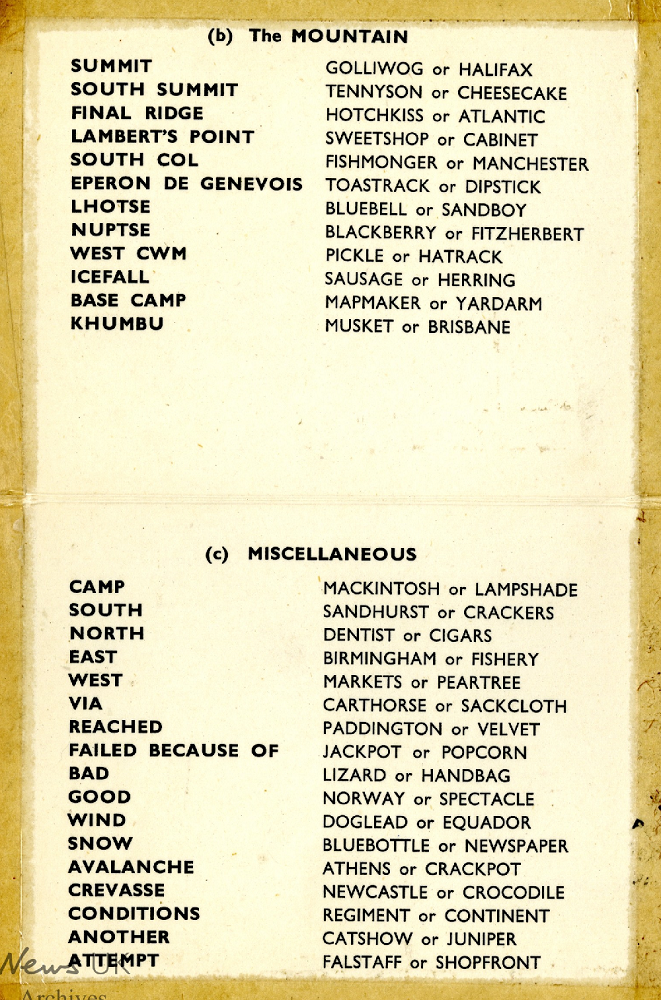
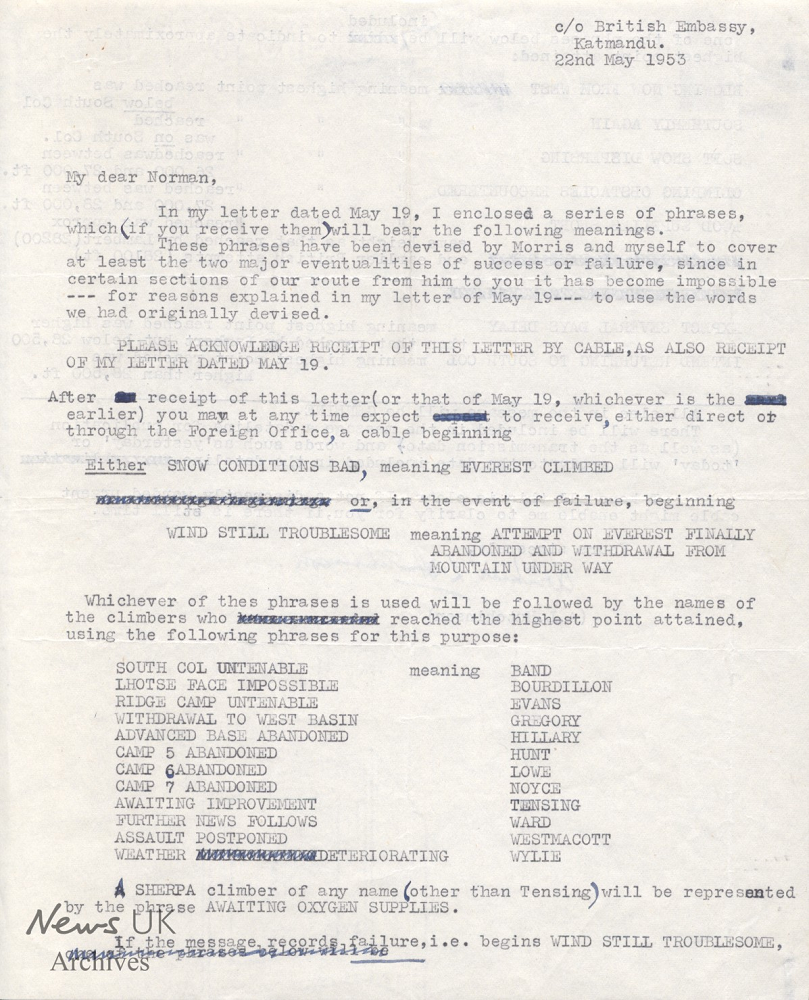
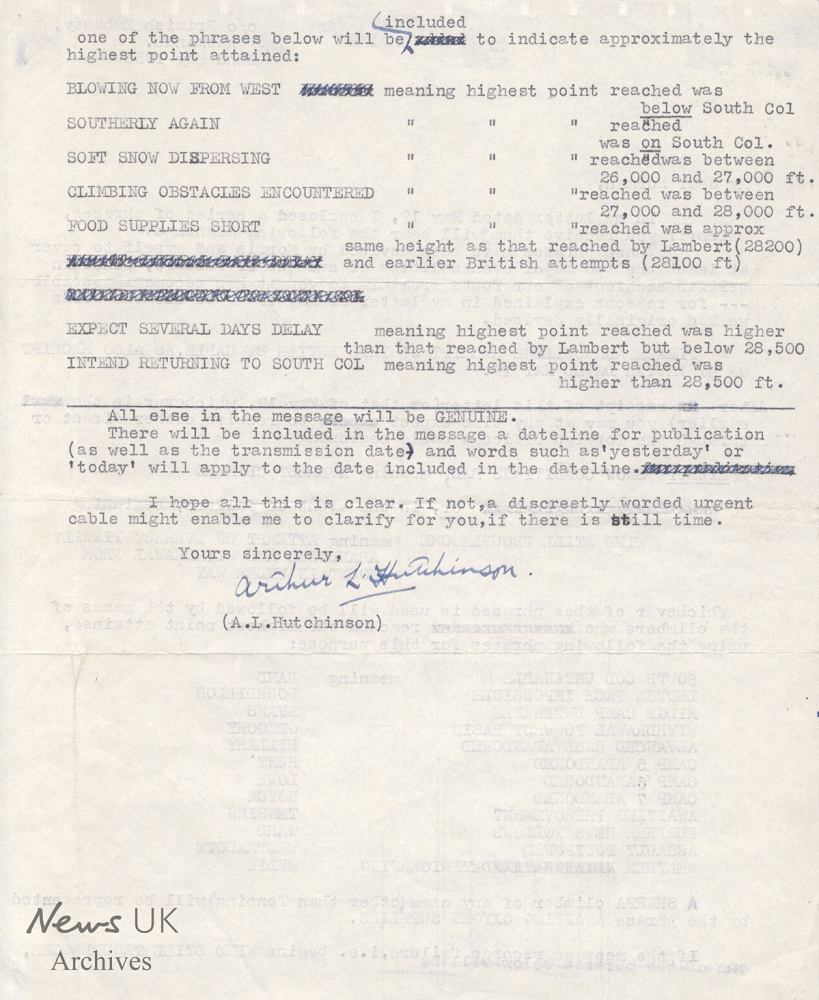

Letzte Kommentare